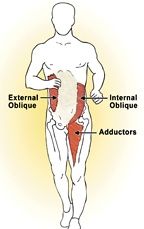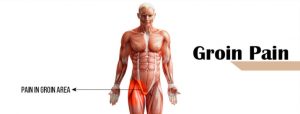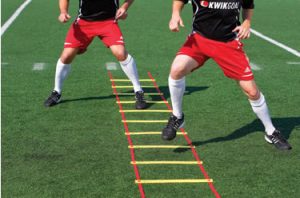Groin pain
Rehabilitation concepts for the shoulder
March 14, 2019Swelling
March 30, 2019When people experience pain in their lower abdomen, where the leg meets the pelvis, they often refer to this as groin pain. While a muscle strain is the most common cause of groin pain in adults, a wide variety of other conditions may be to blame, including an inguinal hernia, kidney stone, soft tissue injury around the hip joint, or in the scrotum (in men). Depending on the underlying cause, groin pain could be gradual or sudden, can be mild to severe.
 To determine the cause of your groin pain, your doctor will perform a comprehensive physical examination and, if needed, order blood and/or imaging tests. In the end, your treatment plan may range from something as simple as rest and ice to something more involved, like physical therapy, or invasive, like surgery in worse case scenarios.
To determine the cause of your groin pain, your doctor will perform a comprehensive physical examination and, if needed, order blood and/or imaging tests. In the end, your treatment plan may range from something as simple as rest and ice to something more involved, like physical therapy, or invasive, like surgery in worse case scenarios.
In this article, we will focus on the Groin pain from soft tissue injury perspective and how we should deal with it in general.
As physical therapists, our job revolves around getting people out of pain and enhance their quality of living. But rehab doesn’t stop there. The most important and overlooked aspect of rehab is to create a bulletproof and pain free region to handle all future activities the patient may do based on his needs.
So how does it work?
I often take the approach of “optimal loading” and strengthen everything and building tissue capacity of all the structures in that region. The adductors, hamstrings, hip flexors, gluts, and most importantly the lower abdominals must all work in integration to provide good mobility as well as stability to the groin complex.
 This groin pain rehab program will be divided into two phases. Phase I is the “get out of pain” phase. Which consist of dry needling, manual release, taping, and avoidance of aggravating factors of course. The main goal of this phase of rehab is to help get you out of pain and decrease the sensitivity of the tissues in your groin. Once we got rid of the pain, Phase II begins. This phase is dedicated to getting your groin strong and stable. Once you have the adequate strength, we can begin to expose your groin to high levels of load, faster movements, and directional movements to truly bulletproof your groin.
This groin pain rehab program will be divided into two phases. Phase I is the “get out of pain” phase. Which consist of dry needling, manual release, taping, and avoidance of aggravating factors of course. The main goal of this phase of rehab is to help get you out of pain and decrease the sensitivity of the tissues in your groin. Once we got rid of the pain, Phase II begins. This phase is dedicated to getting your groin strong and stable. Once you have the adequate strength, we can begin to expose your groin to high levels of load, faster movements, and directional movements to truly bulletproof your groin.
Such programming vary from one condition to another based on the patients need and their goals. For example, horse riders require more of slow twitch fibers around the hip muscle to keep them stable on the saddle and ride pain free, while football players require more of fast twist fibers and agility work to maintain their level and enhance their skills on the pitch. 
The idea is to focus on the hip in general as well as the core in integration rather than the adductors muscles by itself to overcome this pain and bulletproof the area for sustainable results.
Ahmed K.



